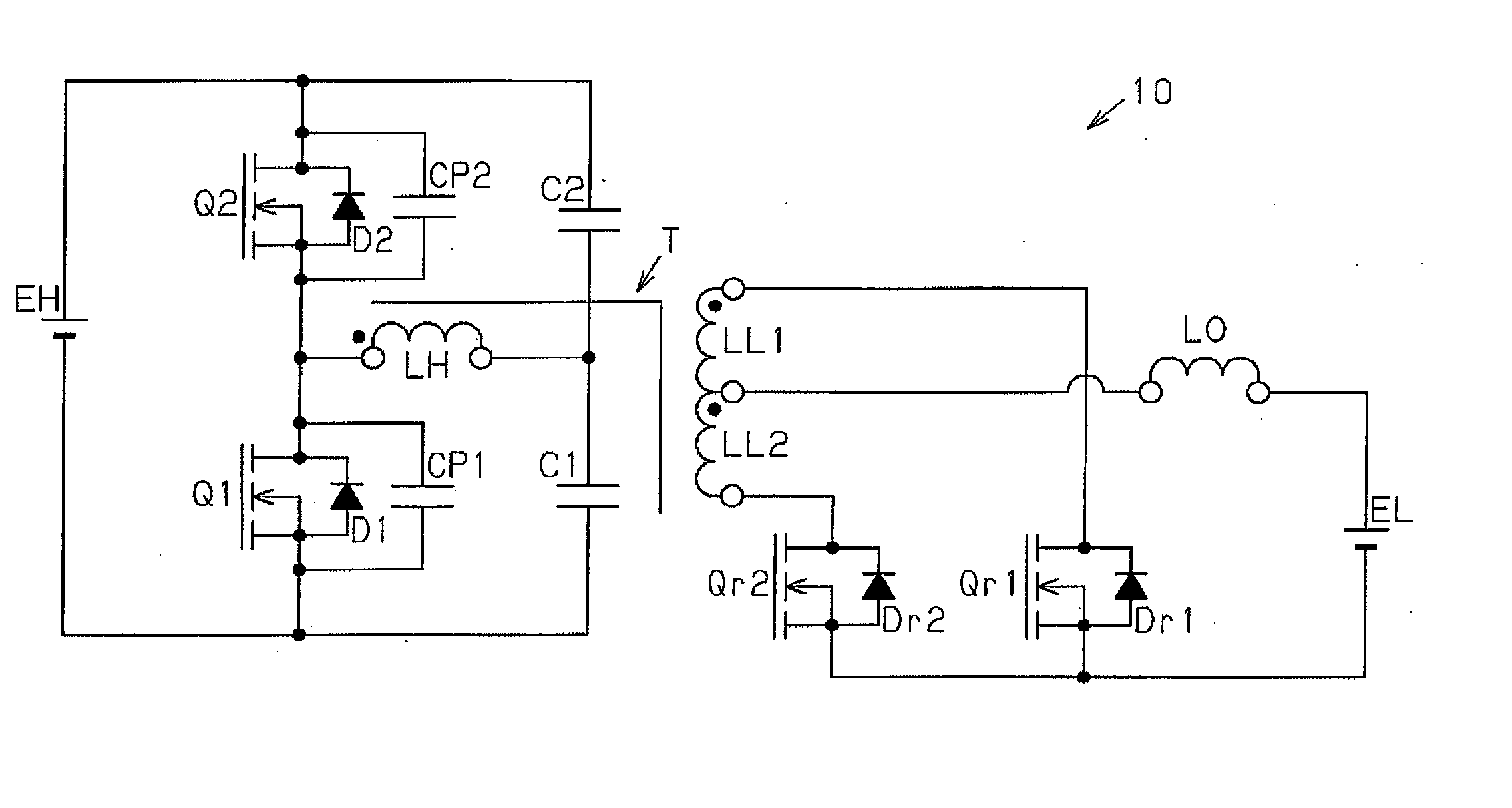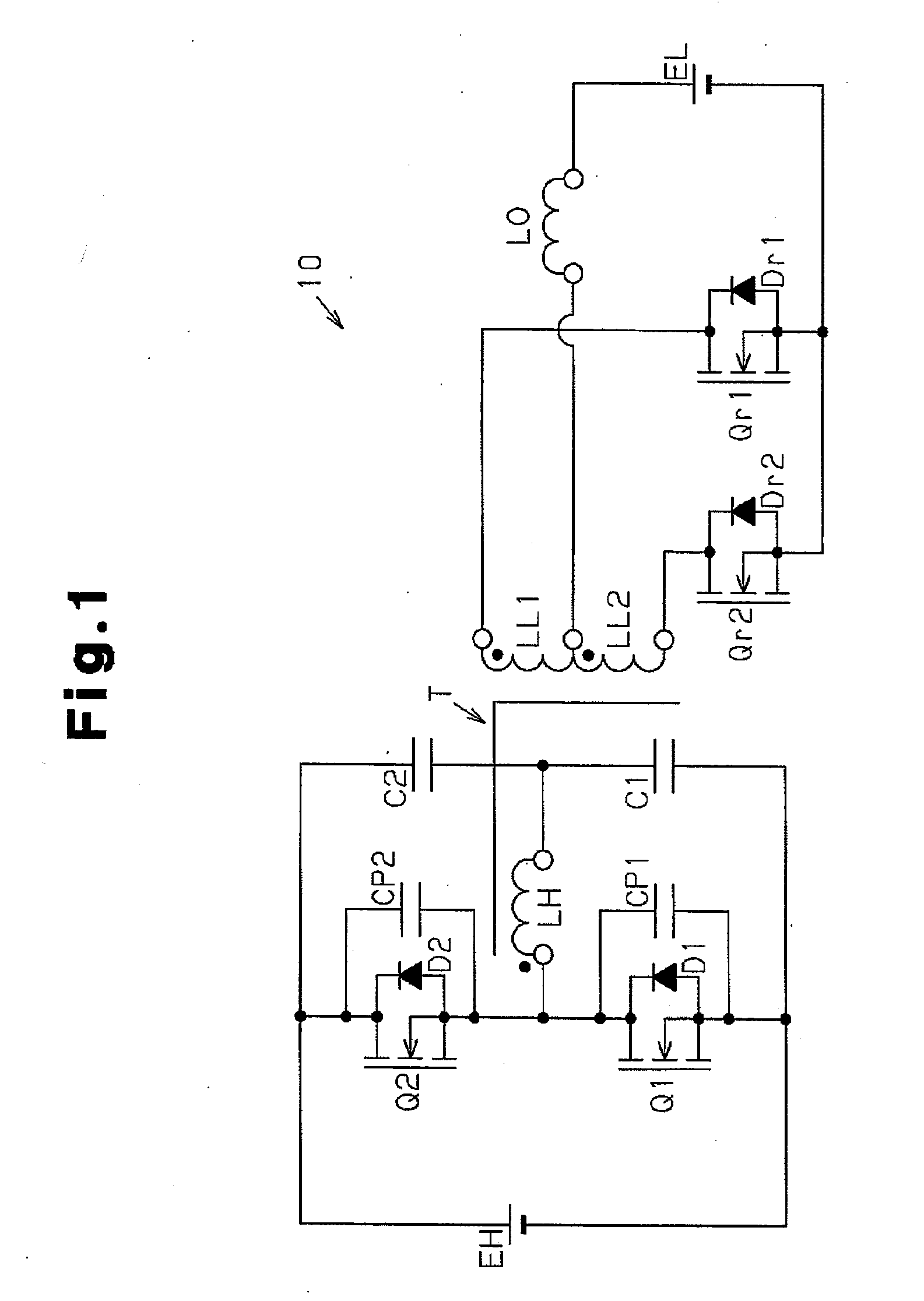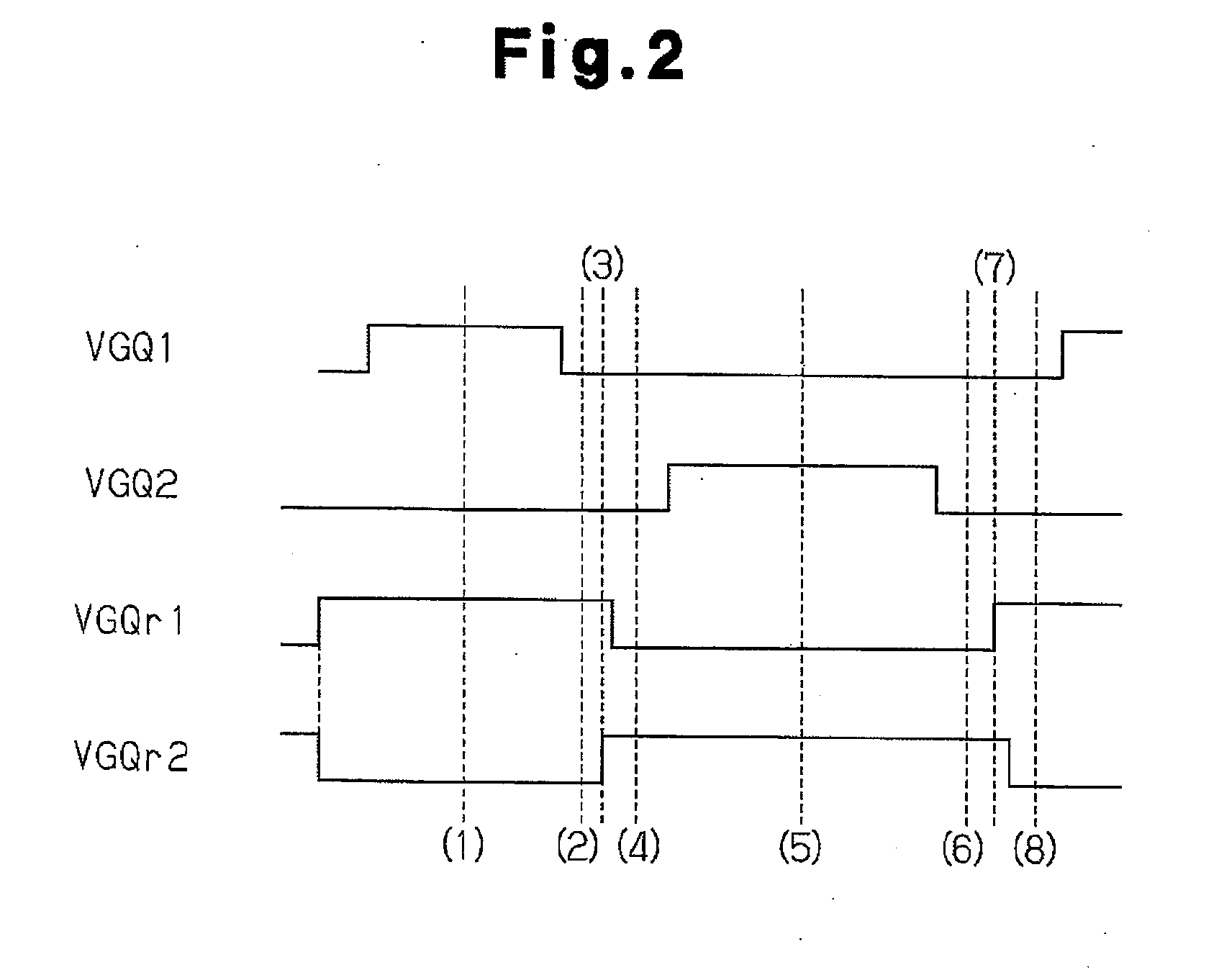Method for Controlling Bidirectional DC-DC Converter
- Summary
- Abstract
- Description
- Claims
- Application Information
AI Technical Summary
Benefits of technology
Problems solved by technology
Method used
Image
Examples
Embodiment Construction
[0033] A method for controlling a bidirectional DC-DC converter 10 according to a preferred embodiment of the present invention will now be described in detail with reference to FIGS. 1 to 18.
[0034]FIG. 1 is a schematic circuit diagram of the bidirectional DC-DC converter 10. The illustrated bidirectional DC-DC converter 10 enables bidirectional power transmission. In other words, the DC-DC converter 10 selectively executes a step-down operation for transmitting power from a high voltage EH to a low voltage EL via a transformer T and a step-up operation for transmitting power from the low voltage EL to the high voltage EH via the transformer T.
[0035] The bidirectional DC-DC converter 10 has the following configuration. A reference terminal (terminal marked by black dot in FIG. 1) of a high-voltage side winding LH of the transformer T is connected to a drain terminal of a MOS transistor Q1 and a source terminal of a MOS transistor Q2. A non-reference terminal of the high-voltage si...
PUM
 Login to View More
Login to View More Abstract
Description
Claims
Application Information
 Login to View More
Login to View More - R&D
- Intellectual Property
- Life Sciences
- Materials
- Tech Scout
- Unparalleled Data Quality
- Higher Quality Content
- 60% Fewer Hallucinations
Browse by: Latest US Patents, China's latest patents, Technical Efficacy Thesaurus, Application Domain, Technology Topic, Popular Technical Reports.
© 2025 PatSnap. All rights reserved.Legal|Privacy policy|Modern Slavery Act Transparency Statement|Sitemap|About US| Contact US: help@patsnap.com



